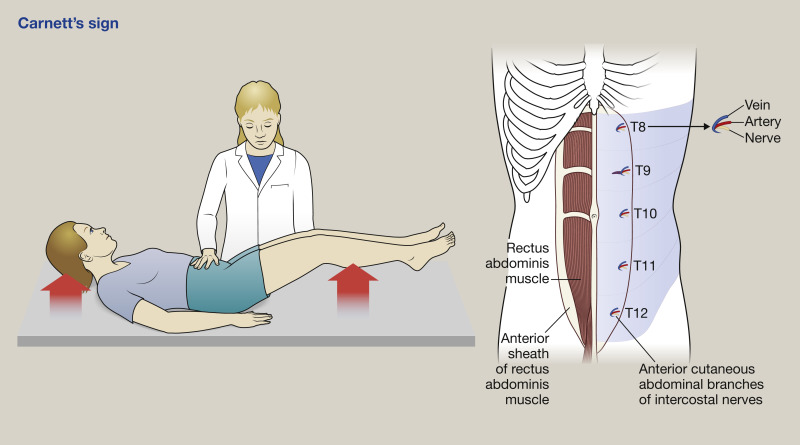ABDOMINAL CUTANEOUS NERVE ENTRAPMENT SYNDROME (ACNES)
Abdominal wall pain is the most common cause of non-surgical chronic abdominal pain. We have recognized ACNES as an entity in clinical practice for almost a decade. It is responsible for up to 30% of all non-surgical pain presenting to GPs, specialists and EDs. The challenge has always been to identify the problem and then obtaining effective treatment for it.

Carnett’s Sign
We need to differentiate abdominal wall pain from intra-abdominal pain. With the patient recumbent, the patient is asked to perform bilateral straight leg raising. If the abdominal pain is WORSE with tension of the rectus abdominus, then the pain is most likely abdominal wall in origin.
The treatment
Dr Bernard Chin pioneered the in-clinic treatment of ACNES using a special ultrasound technique to identify the offending nerve. Identifying the nerve with direct imaging consistently has been reported to be only about 10%, explaining why the treatments of the past were so poor. Treatment success in his clinic ranges from 80 to 95%. Recalcitrant cases are referred to a suitably trained Pain Physician for a trial of pulsed RFA. The success of this experimental treatment has been remarkable.
Caveats
- Ensure the diagnosis is correct. In older patients, ACNES is a diagnosis of last resort. In younger patients, they need to be aware that other investigations need to be entertained if there is zero or incomplete response to ACNES steroid injections.
- ACNES can occur in the context of chronic back pain or other chronic pain syndromes. The success rates in these cases can be dramatically lower due to central pain “wind up” and back pain causing tension of the anterior cutaneous nerve at its source in the thoracic vertebrae.
- Pain associated with extensive abdominal scarring from previous surgery is probably not ACNES and should be treated surgically if required.
